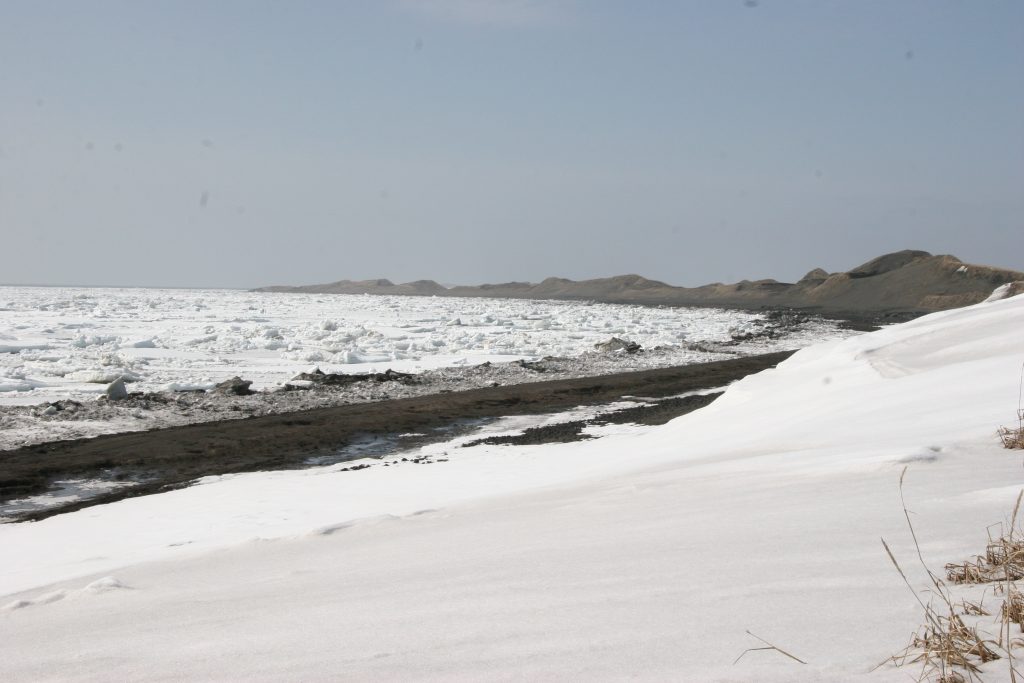A key to the COASST Holiday Card Wreath
Raindrops on Wracklines
There are several types of algae represented in the wreath on this year’s holiday card. All can be seen in lines of wrack on beaches! Can you identify them??

(Don’t worry, we don’t have a new wrack-ID protocol in store – this is just for fun!)
A few fun algae facts:
Sargassum – first on the left – is a nursery for fishes, wherever it drifts. This floating algae is never anchored to the seafloor!
Filamentous Red – second from the left – is a term that applies to many species, and some only at a particular life stage! These algae are united by their colonial growth pattern, which form threads or mesh-like branches.
Ulva – third from the left – is also know as sea lettuce, for good reason. This algae is actually edible!
Macrocystis – third from the right – is favorite of data-guru Tim Jones, who worked with algae in his pre-COASST days. It’s also one of the fastest growing types of algae and can be found in both hemispheres.
Porphyra – second from the right – are also known as nori. You may recognize them on your sushi plate.
Fucus – far right – is the original source of iodine! It was discovered in 1811, and used to treat goiters/as a nutritional supplement.
and Whiskers on Auklets
Whiskered Auklets aren’t very common on COASST beaches. They are homebodies who stay in Alaska and don’t travel as far as other auklets. Their whiskers are only as long and impressive as those on the birds in our wreath during breeding season
If you have the opportunity to hold a Whiskered Auklet, you may get a surprise! Like their relative the Crested Auklet, these birds smell faintly of oranges!
Bright Purple Nurdles
Nurdles are a whimsical name for a nearly-invisible plastic debris item. These tiny pieces of round colorful plastic are pre-production plastic material – they will be melted down and injection molded into the shape of chairs, water bottles, utensils, and many other common plastic items.
These aren’t too common on Pacific Northwest Beaches! But Nurdle Hunt has collected data on nurdles in waterways across the globe. You can also find nurdles in landlocked places because they are transported by trains as well as ships.
The most common color for nurdles is white (2nd = black, and 3rd = yellow). That makes sense! White plastic can be colored or printed on for a wide variety of plastic objects. Purple plastic is not in high demand…can you think of something mass-produced that is also purple?
and Wrappers on Chocolates
Food wrappers of all kinds are some of the most commonly found debris items on beaches. They are often items with low-weathering and local brand names, which haven’t traveled across an ocean basin – they were likely left on the shoreline by human visitors or blown out of landfill/trash disposal sites!
While some wrappers are made of foil or plasticized material that will take ages to break down in the marine environment, more and more brands are choosing to switch to biodegradable or easily recyclable materials, with a lower carbon footprint in production. Ferrero Rocher has even started making EcoPaper out of the waste produced by their hazelnut ingredients!
Silver white winters…

Another winter marks another year of surveys, trainings, and discovery at COASST. May your silver white winter melt gently into spring. We will see you next year, on the beach!
*If you didn’t get a chance to read the is year’s Holiday Letter, click here to learn what we’ve been up to this year. Hint – we couldn’t have done it without you!!
